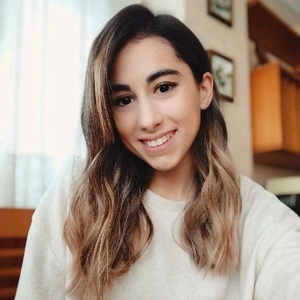34984224
UNIT 32
Description
No tags specified
Flashcards by Miriam González Cano, updated more than 1 year ago
More
Less

|
Created by Miriam González Cano
almost 3 years ago
|
|
Resource summary
| Question | Answer |
| TABLE OF CONTENTS: | 1. INTRODUCTION 2. TEXT AND CONTEXT 2.1. Criteria for textuality 2.2. Types of text 3. NARRATIVE TEXTS 3.1. Characteristics of narrative texts 3.2. Discourse typology 3.3. Structure of narrative texts 3.4. Elements of narrative texts 3.5. Narrative varieties 4. DIDACTIC IMPLICATIONS AND CONCLUSION 5. BIBLIOGRAPHY AND WEBLINKS |
| Quirk defines text as... | a stretch of language which makes coherence sense in the context of its use |
| Context can be described as... | the text that accompanies text |
| Hymes described context of situation including... | -form and content of message -participants -setting -key -medium -genre -norms of interaction -effects of communication |
| Halliday distinguishes between... | -context of situation -context of culture -co-text |
| According to Halliday, cotext of situation is analysed from... | -field -tenor -mode |
| Context of culture refers to... | the meanings and assumptions shared by a community of people |
| Co-text refers to... | the text that surrounds a passage, that it, the words coming before and after it |
| Criteria for textuality | -Cohesion -Coherence -Intentionality -Intertextuality |
| Cohesion vs coherence | Cohesion: unity of form Coherence: unity of meaning |
| Michael Toolan defines narrative texts as... | perceived sequence of non-randomly connected events |
| Characteristics of narrative texts: | -Artificial fabrication -Prefabrication -Goal -Narrator -Displacement -Figures of speech |
| FID can be described as... | a speech mode and thought representation which relies on syntactic, pragmatic and lexical characteristics |
| Characteristics of FID: | -No reported clause -3rd person pronouns -Proximal deictics -Inversion in questions -Modal verbs |
| Structure of narrative texts: | -Orientation -Complication -Resolution |
| Main elements of narrative texts: | -Theme -Plot -Characters -Conflict -Setting -Point of view |
| Theme refers to... | the overarching idea that the writer of the story wants to be understood by the audience |
| Plot refers to... | the structure of the narrative as it moves through time |
| General plotline: | -Exposition -Rising action -Climax -Falling action -Denouement |
| Characters refer to... | the people involved in the narrative |
| Conflict refers to... | the issue or problem characters in a story are confronted by |
| Types of conflict: | -Person vs. person -Person vs. self -Person vs. nature -Person vs. society |
| Setting refers to... | the environment of the story, including the space, time and atmosphere |
| Point of view refers to... | the perspective the story is told from, that is, the kind of narrator |
| Types of narrator: | -1st-person -3rd limiter -3rd omniscient |
| Fictional narrative refers to... | literature created from the imagination, though it may be based on a true situation |
| Subgenres within fictional narrative: | -Fantasy -Science fiction -Realistic fiction -Historical fiction |
| Fantasy: | based on an imaginary setting and involving improbable characters, where the hero is aimed at defeating evil |
| Science fiction: | an adventure story based on the real world, which involves travel and danger, and is set in a future time facing contemporary problems |
| Realistic fiction: | involving believable characters with unique human qualities, and whose endings are not always happy |
| Historical fiction: | based on real historical events, although the author may be creative without making historical mistakes |
| Factual narrative refers to... | any literary work which is based mainly on a fact, even though it may contain fictional elements |
Want to create your own Flashcards for free with GoConqr? Learn more.
